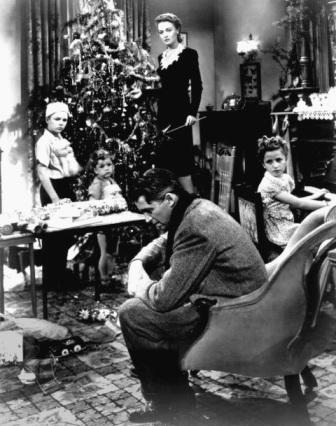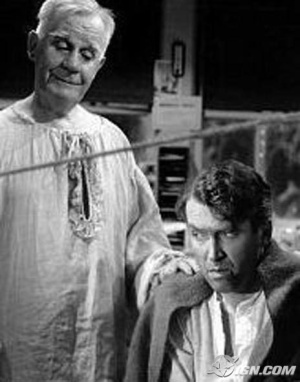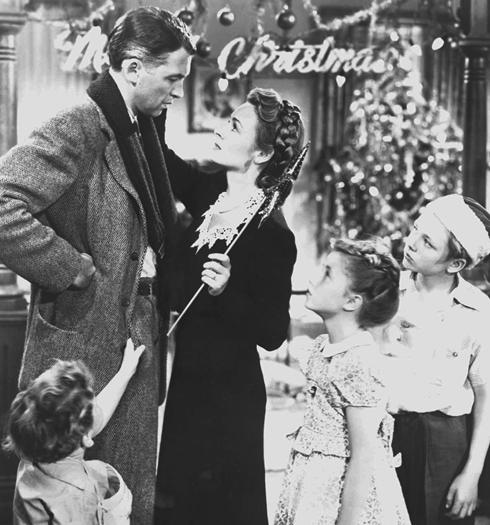By Contributing Writers
John Michlig and Anthony Taylor
Welcome to Apes on Film! This column exists to scratch your retro-film-in-high-definition itch. We’ll be reviewing new releases of vintage cinema and television on disc of all genres, finding gems and letting you know the skinny on what to avoid. Here at Apes on Film, our aim is to uncover the best in retro film. As we dig for artifacts, we’ll do our best not to bury our reputation. What will we find out here? Our destiny.
 GOOD GUYS WEAR BLACK (SPECIAL EDITION) – 1978
GOOD GUYS WEAR BLACK (SPECIAL EDITION) – 1978
5 out of 5 Bananas
Starring: Chuck Norris, Anne Archer, James Franciscus, Dana Andrews, Lloyd Haynes
Director: Ted Post
Rated: PG
Studio: Kino Lorber Studio Classics
Region: A (Locked)
BRD Release Date: August 20, 2022
Audio Formats: English: DTS-HD Master Audio 2.0
Video Codec: MPEG-4 AVC
Resolution: 1080p HD
Aspect Ratio: 1.85:1
Run Time: 95 minutes
CLICK HERE TO ORDER
There are a certain set of expectations when cueing up a Chuck Norris film that GOOD GUYS WHERE BLACK does not live up to, and that’s not necessarily a bad thing.
Norris’s role in GOOD GUYS WHERE BLACK is the debut of the persona he would eventually make famous. His previous film and debut as star was 1977’s BREAKER! BREAKER!, which was not at all in the vein of the eventual stoic martial-arts-hero-doing-helicopter-kicks character he would portray for the balance of his career. However, one of the reasons this film is genuinely entertaining is the fact that Norris hasn’t yet latched onto the simpler “fighting fury” cartoon his subsequent roles encompassed.
1977’s BREAKER! BREAKER!, which was not at all in the vein of the eventual stoic martial-arts-hero-doing-helicopter-kicks character he would portray for the balance of his career. However, one of the reasons this film is genuinely entertaining is the fact that Norris hasn’t yet latched onto the simpler “fighting fury” cartoon his subsequent roles encompassed.
After an intriguingly long and eerie opening credits sequence (the ’78 version of “hi-tech visuals”–and all that implies – accompanied by a soundtrack that still haunts me) the film opens in Vietnam, circa 1973, where we meet a wise-cracking dressed-in-black special ops crew – the Black Tigers – and get to know them well enough to be deeply disturbed when we witness a POW rescue attempt gone wrong (and, as made clear on the 2K Master, very obviously shot day for night ). Also disturbing is Chuck Norris, who portrays Major John T. Booker, parading around without his signature mustache or beard.
After that tragic sequence of events (the failed rescue, not the facially bald Chuck visage), we fast-forward to 1978, where we see Booker racing cars. From the track, he goes directly to a small classroom where he is a professor teaching a class on the Vietnam war.
 See what they did there? Our guy is an intellectual, sure – but he also races cars, so we know he hasn’t shed his adventurous side and gone all egghead. That’s not all; Professor Booker is openly critical of the Vietnam war and America’s role in the conflict, which is pretty darn forward-looking for a late-seventies adventure flick.
See what they did there? Our guy is an intellectual, sure – but he also races cars, so we know he hasn’t shed his adventurous side and gone all egghead. That’s not all; Professor Booker is openly critical of the Vietnam war and America’s role in the conflict, which is pretty darn forward-looking for a late-seventies adventure flick.
He meets Margaret (Anne Archer), who stays behind after his lecture and says she is a reporter digging up information on his unit’s failed raid in ‘Nam and possible government complicity in the disaster. At the very same time, it appears that members of Booker’s Black Tigers team are being eliminated one by one. As per adventure film guidelines, Booker “gets with” Margaret, culminating in a truly rare – but entirely period-accurate – shot of Norris in “tighty whities.” Their coupling is not entirely arbitrary however, as it provides an opportunity to show Booker enduring night sweats as he relives wartime nightmares.
GOOD GUYS WHERE BLACK is Norris’s breakout film, but it’s surprisingly – and refreshingly – free of the action-drenched, by-the-numbers formula that made up his subsequent films. This may be attributed to the direction by Ted Post, who helmed HANG ‘EM HIGH, BENEATH THE PLANET OF THE APES, MAGNUM FORCE, GO TELL THE SPARTANS, and NIGHTKILL.
After the opening Vietnam sequence, the film becomes more political thriller than the patented Norris martial arts blur of combat that became his trademark (James Franciscus is a perfect smarmy politician). Good Guys is a film that Norris constructed and pitched, not a vehicle he merely climbed aboard. We get a peek at some elements of the Norris-to-be, particularly when he watches a plane, in which newfound bedmate Margaret is a passenger, vaporize soon after takeoff, and we never hear her mentioned again in the film.
The KL Studio Classics Blu-ray presentation includes energetic and genuinely entertaining commentary by Mike Leeder and Arne Venema, a “making of” featurette, an interview (curiously unedited) with director Ted Post, radio and TV promotional material, and theatrical trailers.
Revisiting this film for the first time in many years was a real pleasure, and it’s highly recommended for both Norris fans and action/thriller lovers. Get to the chopper!
–John Michlig
 MARK OF THE VAMPIRE – 1935
MARK OF THE VAMPIRE – 1935
3 out of 5 Bananas
Starring: Lionel Barrymore, Bela Lugosi, Lionel Atwill, Jean Hersholt, Carroll Borland
Director: Tod Browning
Rated: Unrated
Studio: Warner Brothers Archive Collection
Region: A
BRD Release Date: October 11, 2022
Audio Formats: English: DTS-HD Master Audio 2.0 Mono (48kHz, 24-bit)
Video Codec: MPEG-4 AVC
Resolution: 1080p HD
Aspect Ratio: 1.37:1
Run Time: 60 minutes
CLICK HERE TO ORDER
A remake of director Browning’s most infamous lost film LONDON AFTER MIDNIGHT, MARK OF THE VAMPIRE lands wide of the mark, missing the bullseye by a fairly wide margin while remaining a stimulating viewing experience.
Though Lionel Barrymore (IT’S A WONDERFUL LIFE, KEY LARGO) is ostensibly the star of the picture, the real attraction for modern viewers is the tantalizing glimpse of what LONDON AFTER MIDNIGHT might have offered, as well as Lugosi’s first revisit of Dracula under the guise of Count Mora. Also of note is the introduction of Carroll Borland as Mora’s daughter Luna, who provides the original visual pattern for multiple generations of Goth girls – inspiring not only Charles Addams’s Morticia and Wednesday Addams, but Lily Munster and the likes of television horror hosts Vampira and Elvira as well.
Count Mora. Also of note is the introduction of Carroll Borland as Mora’s daughter Luna, who provides the original visual pattern for multiple generations of Goth girls – inspiring not only Charles Addams’s Morticia and Wednesday Addams, but Lily Munster and the likes of television horror hosts Vampira and Elvira as well.
In 1927’s silent LONDON AFTER MIDNIGHT, Lon Chaney played three different parts, as assayed in this film by Barrymore, Atwill, and Lugosi – much more a tour de force performance one would assume without being able to actually see the film, which was by many reports no more successful creatively than this talkie remake. Lugosi would go on to play similar vampire roles in THE RETURN OF THE VAMPIRE, MOTHER RILEY MEETS THE VAMPIRE, and finally returned to the role that made him world famous as Dracula in ABBOTT AND COSTELLO MEET FRANKENSTEIN in 1948. What sets this film apart is the feeling that Lugosi – having been a major horror film star for four years at this point – is letting it all hang out as Count Mora, playing the role of Dracula as he would like to have played him 1931. More toothy, less verbose (he has almost no dialog whatsoever), and really leaning into the campiness of the stereotype he provided in Dracula. This performance almost plays as a parody of Count Dracula, and it’s enjoyable because he was embracing his destiny to be the go-to visual for vampires in media for  time immemorial. Likewise, amateur actor Borland is really only in the film as set dressing, but she is unforgettable and iconic as the vampire girl Luna. In two possible cinematic firsts, she provides a performance embracing female-on-female vampire activity as well as the first recoil and hostile hiss by a vampire – something that has become de rigueur for night walkers when faced by a cross or holy water in subsequent genre films.
time immemorial. Likewise, amateur actor Borland is really only in the film as set dressing, but she is unforgettable and iconic as the vampire girl Luna. In two possible cinematic firsts, she provides a performance embracing female-on-female vampire activity as well as the first recoil and hostile hiss by a vampire – something that has become de rigueur for night walkers when faced by a cross or holy water in subsequent genre films.
Where MARK OF THE VAMPIRE fails is at a story level. The convoluted screenplay produced an original edit of the film that ran twenty minutes longer than the version released to theaters, which hints at a lot of subplots and scenes that were ultimately deemed superfluous by the studio. Whether they might have made the farfetched plot more palatable is hard to say – as it stands, the plot isn’t difficult to follow, but it’s not even remotely realistic – but should that matter in a film about “vampires” that looks this gorgeous? Art direction and set design far surpass that of Universal’s DRACULA, with MGM a latecomer to the horror film, throwing money at the latest box-office-darling genre. Cinematography by L. William O’Connell and John Stumar set the mood well, and acquit the story with appropriate gothic panache.
Warner Brothers Archive Collections presentation of the film was sourced from a new 4K scan from the original nitrate negative, and the results are impressive. Picture density, film grain, detail, and contrast are all the best I’ve ever seen for this title, and absolutely worth the purchase price. Supplemental features include a legacy commentary by author/critic Kim Newman (Anno Dracula) and writer/editor Stephen Jones is entertaining and informing, as it’s more of a conversation between two film loving friends than dry historical annotation. Also included are “A Thrill for Thelma” – a 1935 featurette unrelated to the film, as well as a Harmon-Ising cartoon, The Calico Dragon and the film’s original trailer. Only the feature is in HD.
the feature is in HD.
Though the production history and performers and creators of this film are of more interest than the film itself, I still recommend grabbing a copy. For a film with this much historical significance to Lugosi/Browning completists as well as vampire lovers, this disc is worth picking up.
–Anthony Taylor
*Anthony Taylor is not only the Minister of Science, but also Defender of the Faith. His reviews and articles have appeared in magazines such as Screem, Fangoria, Famous Monsters of Filmland, SFX, Video WatcH*Dog, and many more.
*When he’s not hanging around the top of the Empire State Building, John Michlig spends his time writing books like It Came from Bob’s Basement, KONG: King Of Skull Island, and GI Joe: The Complete Story of America’s Favorite Man of Action. Read more at The Fully Articulated Newsletter and The Denham Restoration Project.
Ape caricature art by Richard Smith.







